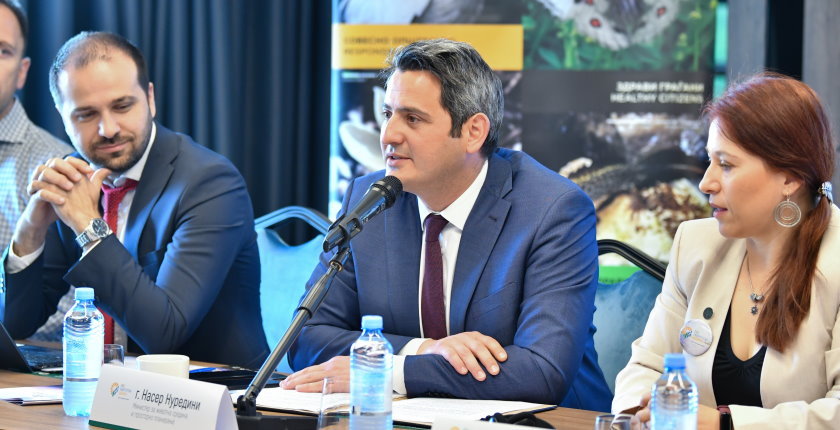
Photo: Eko-svest
In identifying suitable locations for photovoltaic and wind farms within the energy planning process, degraded land should be considered а priority, Minister of Environment and Physical Planning Naser Nuredini pointed out at the presentation of a study on energy solutions for North Macedonia with a minimal environmental impact.
The Nature Conservancy (TNC), the Macedonian Academy of Sciences and Arts (MANU) and environmentalist organization Eko-svest held a conference to mark the end of the first phase of their joint research of possible energy solutions with a minimal impact on the environment in Northern Macedonia.
While identifying sites with high potential for the construction of solar and wind parks within the energy planning process, primarily degraded land should be considered to avoid a negative impact on the environment and utilization of fertile agricultural land, Minister of Environment and Physical Planning Naser Nuredini said at the event.

Mines, tailings dumps seen as best sites for wind, solar power plants
The research is particularly focusing on tailings dumps and mines as locations that could be rehabilitated, said Aleksander Dedinec from MANU. “The development of renewable energy sources is closely related to the network transmission and distribution capacities and the locations where they will be built. A number of limitations need to be considered in the planning process,” in his words.
The idea is to identify the best locations for investments in renewables and prevent any harm to local communities and biodiversity
The project is aimed at overcoming challenges in the implementation of the national energy and climate plan (NECP) with ambitious goals for renewable energy. The idea is to identify the best locations for such investments and prevent any harm to local communities and biodiversity. The results were shown to decision makers, representatives of civil society organizations and other stakeholders.
“TNC supports this initiative as a way to develop local practices in smart and inclusive energy planning. We are pleased to see the support of the Government of the Republic of North Macedonia for this project and we hope that its results will be directly applied by state institutions to meet the set goals,” TNC’s Southeast Europe Energy Coordinator Igor Vejnović said.
Energy planning must be inclusive
Another aspect of the project was identifying and involving stakeholders. The partners conducted public opinion polls, gathered focus groups and got opinions from government institutions, energy companies, farmers, conservationists, civil society organizations and experts working on environmental and social aspects.
“The findings of our survey and focus groups showed that citizens are very concerned about the potential negative impact of energy projects on the environment and local communities. That is why energy planning must be an inclusive process, in which no needs will be neglected,” Ana Colovic Lesoska from Eko-svest pointed out.
TNC is implementing a similar project in neighboring Serbia
The Nature Conservancy is implementing a similar project in neighboring Serbia with local partners, focusing on mapping land suitable for solar PV development. The project Smart-from-the start planning for sustainable development – Mapping solar potential in Serbia (Pametno planiranje za održivi razvoj – Mapiranje solarnih potencijala Srbije) aims to build social trust through an open, transparent, inclusive process for stakeholder engagement.
This process will guide the development of a low-conflict solar siting scenario for Serbia by identifying the highest priority areas for solar development – that also have the lowest environmental and social conflict. Finally, this scenario should serve as a replicable case study that can be used to demonstrate the value of low conflict solar siting approaches in other countries in the Western Balkans, and in the wider European context. The maps of the land suitable for solar PV development in Serbia should be available by the end of 2022.


















Be the first one to comment on this article.